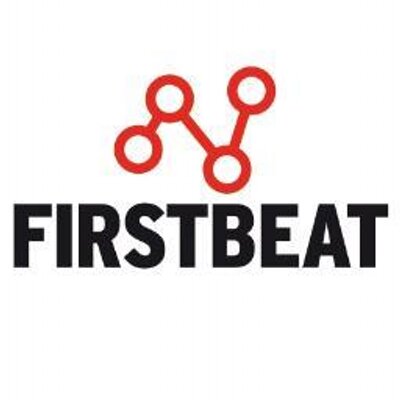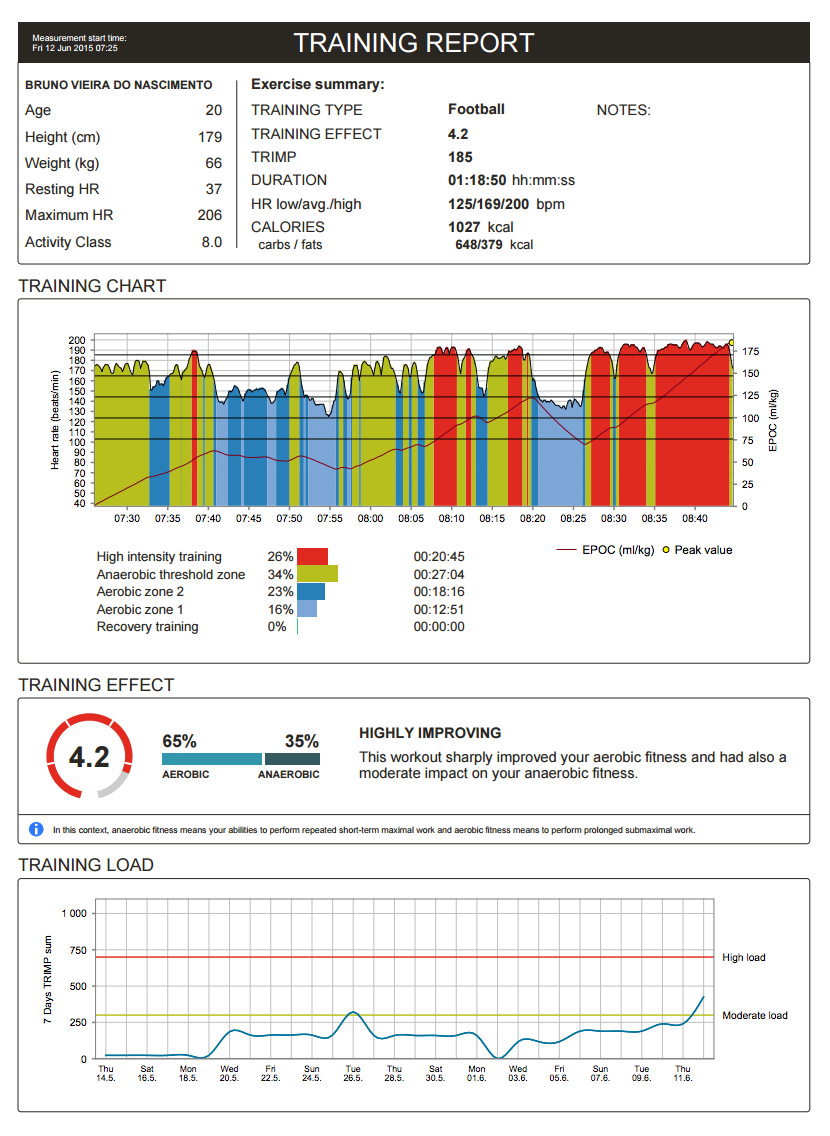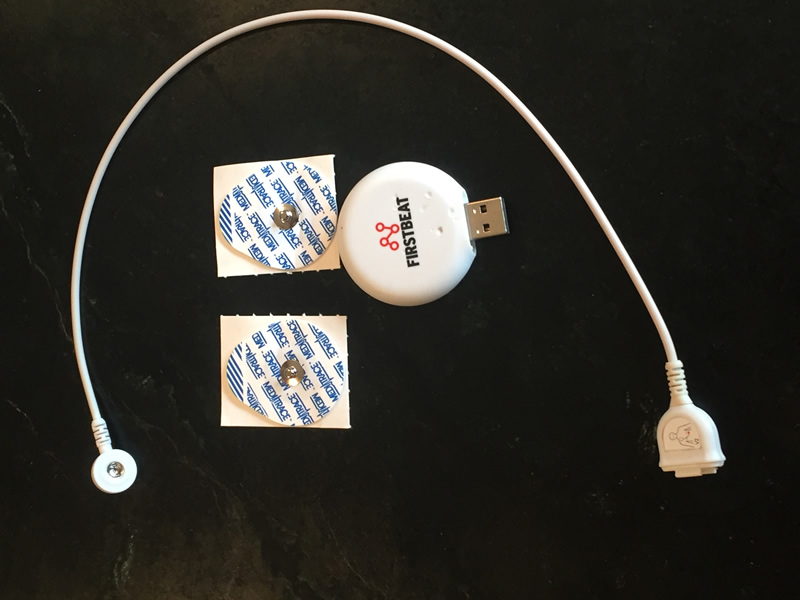In-Depth with Firstbeat: Part 2

[Ed. note: this is the second in a three part series going in-depth – really in depth – on the FirstBeat system. We struggled with the decision to split this up versus keeping it whole. But at 4,800 words of great content, it just seemed a bit long for a single piece. So we'll be publishing it in three parts, but in short order. So hopefully that will explain why this piece sort of just "ends" ; it's because it is not the end. If you missed Part 1, you can find it here.]
How to use it
Essentially the Firstbeat system measures two primary factors, training load and recovery. The two are obviously related, but can also be uniquely independent. Training load is monitored through a combination of factors, in particular, Excess Post-exercise Oxygen Consumption (EPOC). Measuring EPOC offers several advantages over measuring power or heart rate alone. "EPOC is very interesting in that it helps you understand the load that you feel when you're training is cumulative, not instantaneous, noted Caldwell. "The cool thing about EPOC is that it looks at accumulation of effort over time. The best athletes have a great sense of how to keep things "easy:" their HR can drift up a bit, but they can feel the recovery. What I see in less accomplished athletes is that they religiously follow the HR monitor, so sessions designed to be easy oftentimes aren't so. Typically amateurs overdo it on easy days and under train on hard days. Using EPOC to help monitor this is huge."
"Granted, my case is somewhat unique," Caldwell continued, "as I exclusively coach elite athletes, so EPOC scores are useful, but the recovery thing is even more useful for me. The recovery score is great because it utilizes HRV as a real-time score. The recovery score is an indication both of the level of recovery and the level of fitness. You can't rest your way to a great recovery score any more than you can rest your way to a great performance. Your peak recovery scores come in relation to your peak training loads and your best management of the recovery process, so it's not just rest – paradoxically it is also training load."
Galanes followed up on this thought, "This system is based on understanding each individuals unique physiology. To use this system optimally, you need to start out and do some testing programs on things like max HR and help determine max VO2. so you need to do a 6 min max test. This helps set a good benchmark for all of the data. This is key, as you need good data going into the system at the start. Once you have this, all you need to do is start training and understand the simple observations of EPOC. The information you get from the system gives you the tools to quantify the training load but also ask the questions about how to modify training to improve overall capacity and performance. The human body is always in flux: it is always adapting to load, so the body is not the same day in and day out and FB is one of the best systems to quantify these changes and better define these different states of readiness."

Over The Hill Gang
One group Galanes believes benefits the most from HRV monitoring is masters athletes. "Recovery profiles for masters athletes are very, very different than young, elite athletes. As we age, there is a whole different training process that needs to occur. Ned Overend, Joe Friel and others are making some good observations on this. Since we all age differently, FB is one of the best possible tools to assess each individuals response in training and recovery. The real value at looking at EPOC is to help you understand if you're getting the desired effect of your training. Whether biking, running, swimming or Nordic skiing. If you go too hard, you are compromising something later in the training process. It really helps clarify the focus and the implications of the training. It is the most incredible training tool that has come along in my training and coaching lifetime."
Optimal Usage
As a frequent traveler to both Europe and high elevation (sleeping at 7,200 ft, training between 6,700 ft – 10,400), being able to measure the "stress" and overall physiological impact of traveling to and training at these sites have proven to be incredibly valuable. Sure, any idiot knows that they're tired when they get off the plane after a 9 hour flight, but what does this really mean in terms of training? Should you even train right off the plane or take a nap instead? If you do go, how long and hard should you go? Firstbeat can help answer all of those questions. And that's just the tip of the iceberg.
Anyone who knows me knows that I lead a very unusual life. I spend more time on airplanes than many people do in bed. I have a large animal rescue and much to the amusement of my vet and farrier, I often ride my mountain bike to my farm to administer vaccines to the animals while wearing a full cycling kit (apparently this isn't all that common). I also regularly work on three continents, ski home from work in the dark and a bunch of other stuff too strange to print, so I think most would agree that I am clearly an outlier on the curve in many ways and in many things. Now, having said that, while my stressors may be different from yours, my guess is that each and every reader out there has lots of other demands for their time outside of training and lots of factors that impede recovery, some unique to them, others not. Sure, most of these stressors most likely don't involve giving vaccines to donkeys or having the entire US Ski Team's jump skis lost in Japan, but I've yet to meet the person who claims their job is easy, who gets all of the sleep that they'd like and who does not have any worries or responsibilities. So just how much is your stupid job, long commute or inability to attract a member of the opposite sex affecting your training? More than you might expect.

"The thing that the most interesting about it is that it provides hard data on feedback that helps us modify our behaviors in ways that are otherwise difficult," claimed Caldwell. "I first started using Firstbeat when I was traveling in Europe. I found that I was getting high EPOC scores on runs that I thought were easy. As soon as I recognized the stress from the long travel and adapted my training, I got better EPOC scores and felt an immediate fitness bounce. Don't get me wrong, it took me years to learn this lesson and I had to learn it the hard way. Generally us old dudes go out and hammer. Most master's skiers train like they're going to win world cups. That's just wrong. We're exercising our fantasies, not reality. This system helps stop that and allows you to train smart. It can both slow you down and speed you up, which is an important mix. Generally out instincts don't always line up with the true need of the situation and figuring out how to keep this in check is very, very important."
One of the elite athletes that Caldwell coaches on the US Ski Team is Noah Hoffman. Hoffman's perspective is very interesting in that he is exclusively focused on outcomes, not on any of the theory or science behind the system. "I don't really look at the numbers, I rely on Zach for that, all I know is that hit helps me a great deal. I've been using the system for a while and I love it. It gives me piece of mind when I'm going into a big training block that I can handle the training load. I know I'm not going to drive myself to oblivion. It's also very valuable if you start to feel rundown from travel or illness, as it gives you good feedback on just how much you should back off or push through."

Another elite skier to use the system is Sophie Caldwell, winner of a World Cup this year. "I've only been using it for about a year, but I love it. When I see my recovery trending downward, I can catch it early, which is so key. It's also been very interesting to see which workouts take more out of me. I've noticed things like if i'm in level 1, I can go forever, but as soon as I start going into level 2, there is a much bigger cost there. I know this is very different for different people, so this allows both the athletes and the coaches to see that different workouts affect different people in different ways. Liz Stephen (US Ski Team teammate) and I are both coached my Matt (Whitcomb) and we're amazed when we compare data on how different workouts effect us. I find this fascinating and it clearly shows how important individualized monitoring is for athletes. If Liz and I were attempting to follow the same program, it wouldn't work well for either of us. So thanks to the data and insight we've gotten from the system, we've all learned a lot about ourselves and training."



Start the discussion at slowtwitch.northend.network